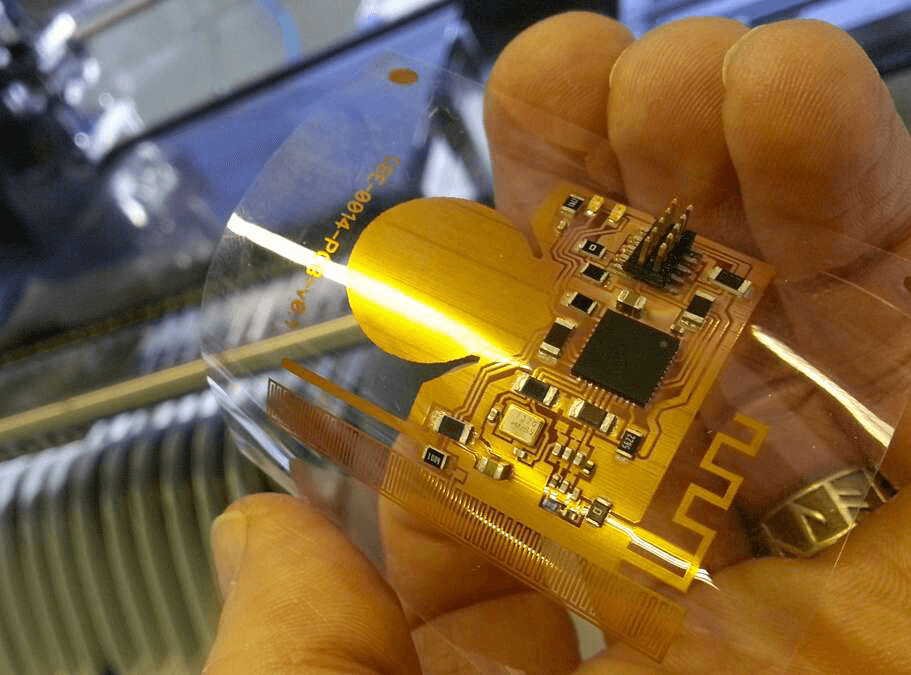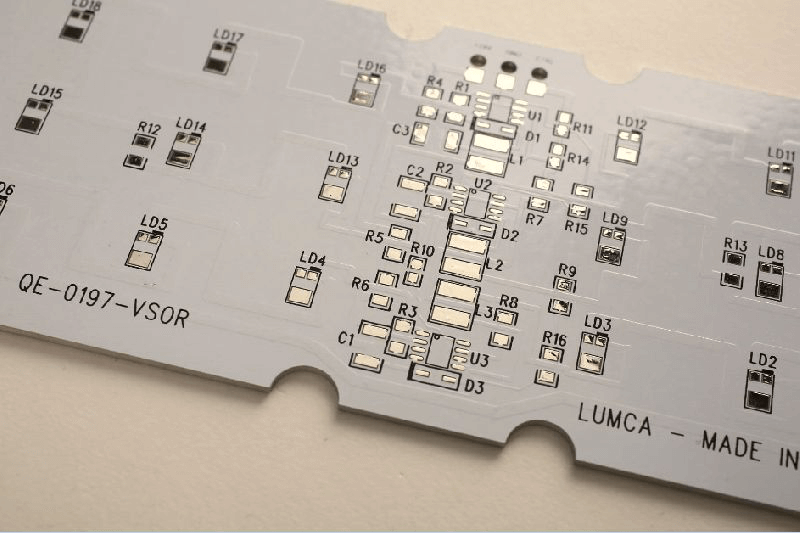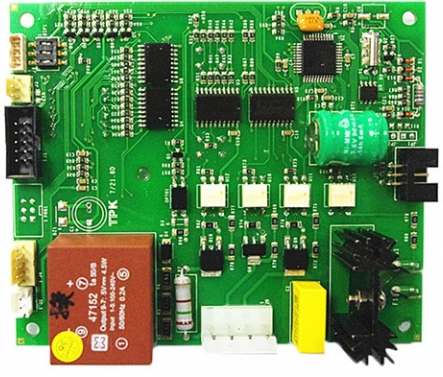How does flexible PCB manufacturer solder flex pcb? (Learn flex pcb advantages)
2020-05-04Check the impact of flexible PCB in the modern mobile phone industry and its expected industry growth
What is a flexible PCB material?
The flexible PCB material includes a flexible substrate made of a dielectric layer. It provides a flexible substrate for conductive traces to be etched on it. For flexible PCB manufacturer with clear portability and flexibility requirements, flexible PCB materials are the best choice.
Polyimide or polyester materials can be used as the dielectric layer. Moreover, copper is also a common material for printed circuits on flexible printed circuit boards. The thickness of the copper layer here may be 0.0001〃 or less to 0.010〃 or more.
Due to the high oxidation tendency of copper, you need to cover the copper traces with a protective layer. Similarly, gold and solder are usually the materials of choice for this protective cover.
This is because gold and solder have excellent electrical conductivity and factor capabilities.
Generally, flexible PCB manufacturer use flexible PCB materials incorrectly. Moreover, it is consistent with a set of rules applied to rigid PCB materials. Flexible PCCB materials differ in how they are used to manufacture PCBs. And the applications they support.
The role of flexible PCB manufacturer in electronics consumer industry
FPC is mainly used in consumer electronics products, and mobile phones are its largest application market. According to Prismark data:
- the global FPC output value reached approximately US $ 12.8 billion in 2018 and
- is expected to reach approximately US $ 14.9 billion by 2022.
- with an annual compound growth rate of 3.87%.
- Downstream application structure, consumer electronics products are the main application areas of FPC.
- of which smartphones and tablets account for 40% and 16% respectively.
Occupying the vast majority of the FPC downstream application market. In recent years, with the rapid development of automotive electronics, the proportion of FPC demand gradually increased to 14%.
flexible PCB manufacturer soldering process
Manually soldering the flexible board to the circuit board is the cheapest process of all flexible board welding processes. And some can even work without the use of jigs. But its welding quality is also the most unreliable process for flexible PCB manufacturer.
Because manual welding is easy to cause:
- empty welding
- Virtual welding
- false welding
- bridge short circuit and other quality problems.
This is because the soft board is easy to move. Or lift when the soldering iron head is removed and the solder has not been cured during manual soldering. After the solder is cured, false soldering and empty soldering are formed.
Therefore, it is best to use a heavy object to press on the soft board during manual welding until it is removed after welding. Furthermore, it can greatly improve the welding yield. In addition, the gold finger soldered on the flexible board is preferably opened with a through hole (PTH).
Simultaneously, it can increase the vision to confirm whether the soldering is good. And can also reduce the risk of short circuit of overflowing tin.
Laser soldering process by flexible PCB manufacturer
Laser soldering relies on the excitation of laser energy. To transform into heat energy to achieve the purpose of soldering. So, its soldering is usually used to directly heat the laser where it hits the solder. This process is simple for a professional flexible PCB manufacturer.
In fact, work bears feel that laser welding is not very suitable for FPC soldering on PCBs. Perhaps work bears have insufficient experience. Moreover, it is always thought that laser is more suitable for welding of connectors.
Because there are many FPC designs that do not have via holes. Subsequently, it causes the laser light cannot directly hit the solder. And the laser light cannot be fully heated.
In addition, this type of laser welding equipment is usually a dedicated machine and a non-universal machine. Its energy is generally not suitable for performing other operations. So the equipment cost is not cheap.
What is flexible PCB manufacturer prenatal treatment of flex pcb?
There are three aspects for a flexible PCB manufacturer that need to be dealt with in prenatal pretreatment. Therefore, these three aspects are all done by engineers.
- The first is the FPC board engineering evaluation.Mainly to evaluate whether the customer's FPC board can be produced. And whether the company's production capacity can meet the customer's board making requirements
- unit cost.if the engineering assessment is passed. Then the next step is to prepare materials to meet each production link. Similarly, the supply of raw materials. And finally, the engineer processes the customer's CAD structural drawings. Gerber line information and other engineering documents to suit the production environment. And production specifications of the production equipment
- Then devolves the production drawings. And other materials to the production department. Various departments such as document control and procurement enter the regular production process.
The importance of flexible PCBs
You are already thinking, " flexible PCB manufacturer have amazingly rigid PCB boards. Why do we even need flexible PCB materials? Well, there are several compelling reasons to support the transition to PCB-flex. Let us look at some of them.
Flexible PCB is easier to pack
We are now in the era of the rise of nanoelectronics. Generally, this means that we need to install more components in a compact area. Simultaneously, with a flexible PCB, this will prove easier than you think. Studies have shown that:
compared with rigid pcb, flexible pcb can save 60% of the weight and space.
These extremely tiny parts are now being welded with microscopes, tweezers and other small tools.
Flexible PCB brings more reliable and flexible components
Remember, flexible PCBs reduce the interconnection required. This means less solder joints and contact creases. Of course, this means that potential sources of failure are minimized and performance is generally improved. This is why flex pcb is now ubiquitous for flexible PCB manufacturer in medical applications.
At this year's Consumer Electronics Show (CES), bug electronics companies launched high-profile flexible screen commodities in a high-profile manner. Allowing flexible screens to enter the masses' vision for a while and become the focus.
The newly introduced flexible circuit board has significant advantages. Moreover, It is frivolous and easy to carry. Moreover, it can be folded into a paper and placed in the pocket of the consumer.
Currently, there are three major concerns for flexible commodities:
- Flexible touch screen
- Moldablecircuit board
- Flexible battery
The increasing demand of flexible PCB manufacturer in mobile phone industry
flexible PCB manufacturer is contributing in mobile industry on massive level. Driven by the demand for thinner and thinner applications. Such as downstream smart phones, the share of FPC is expected to continue to expand.
With the rapid development of the downstream electronics industry in recent years. The demand for electronic products continues to expand and gradually develops towards diversification and customization.
As an important branch of PCB, flexible PCB manufacturer has more excellent physical characteristics than traditional rigid circuit boards.
- FPC can be bent
- light and thin,
- and has excellent electrical properties,
It can greatly reduce the volume and weight of electronic products. Furthermore, meet the needs of electronic products to develop in the direction of:
- high density
- miniaturization
- thinness, and high reliability.
In recent years, the FPC market has sprung up. And its proportion has continued to expand. Subsequently, becoming one of the core driving forces for the growth of the global PCB industry.
Conclusion- flexible PCB manufacturer advantages
flexible PCB manufacturer divides FPC according to the number of layers. Similarly, FPC can be classified into:
- single-layer FPC
- double-layer FPC
- multi-layer FPC
Generally, related manufacturing technology is based on single-layer FPC manufacturing technology. Subsequently, through lamination technology Implementation, as follows:
FPC has the advantages of:
- high wiring density
- light weight,
- Thickness
- bendability, and
- high flexibility.
It can withstand millions of dynamic bending without damaging the wires. It can be arbitrarily moved and stretched according to the spatial layout requirements to achieve three-dimensional assembly.
The integration of device assembly and wire connection has advantages that other types of circuit boards cannot match.
FPC has been widely used in mobile smart terminals by flexible PCB manufacturer such as
- smartphones
- tablets, and
- wearable devices.
It is by far the demand for miniaturization of electronic products and convenient mobility.






